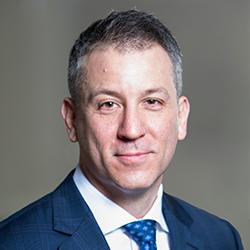
Northleaf's Jamie Storrow recently sat down with Infrastructure Investor to discuss the increasing specialization of infrastructure funds.
How has the infrastructure industry evolved over the past decade in terms of increased market segmentation?
This is a relatively young industry and segmentation is a new trend, but we are increasingly seeing a variety of funds coming to market, specializing by transaction size, risk profile, geography, sub-sector and infrastructure type. For example, there are numerous renewable power funds being marketed right now. A few years ago, that degree of focus was rare. If you turn the clock back 10 years in North America, outside the US energy sector, there were no more than a few non-generalist managers from which to choose.
Is the market segmenting in terms of risk?
There is certainly more differentiation in terms of risk profile. We are increasingly seeing the use of high-level definitions such as "core", "core-plus" and "value add". As you move up the risk curve, you see more development risk or more emerging market risk, for example; whereas, in the "core" segment, it is uncommon to see those risks. Interestingly, there are now funds in the market that are combining various forms of specialization – PPP greenfield funds investing in a particular country or region, or sector specialists with a distinct risk appetite working in a targeted geography.
In terms of segmentation, is it greater in some geographies?
I would say segmentation is greater in Europe as the industry is simply more mature there. There are more small and specialized European funds. Until recently, the North American market was dominated by large energy funds. You don’t see much in the way of PPP opportunities in the US and there is not the same depth of the transportation market. Rail and airport assets don’t exist on the same scale, and Europe has more segmentation today in this regard.
What’s driving this segmentation trend globally?
Investors are putting more money into alternatives overall, which is driving a greater need for differentiation. Managers need to be able to show investors a level of specialization to stand out. Investors are getting more sophisticated in their approach to portfolio management too – they want diversification by transaction size, geography, sub-sector and risk, and will do a lot of due diligence to ensure crossover between managers is limited. Investors might have a European core manager and a US energy manager, and look for a global mid-market manager or an emerging markets manager or a greenfield specialist, to fill whatever gaps they might have in their portfolios. Northleaf generally specializes in the smaller end of the mid-market. Investors will often look at us as a complement to investments with managers like GIP and Brookfield – large-cap global players that target a completely different part of the market and take on different types of risk.
How has this segmentation come about? Is it through franchise extension or spin-outs or new entrants from other markets?
If you go back to the mid-2000s, which is what I would call the bank-sponsored era, Morgan Stanley, Goldman Sachs, Macquarie, UBS, Citi, JPMorgan – a number of international banks – had funds and they tended to be more generalist. I think some of the specialization we see now has come with there being more employee-owned groups, and groups that didn’t have the balance sheet to support a generalist fundraising effort. The fundraising pitch of the mid-2000s was completely different from what it is today, even for the bank-owned groups, of which there are fewer.
How are firms growing their specialist expertise?
Compared with a decade ago, firms are increasingly bringing in professionals with industrial experience to complement their finance expertise. For example, Northleaf has a growing team of operating partners that work exclusively with our firm, each with their own sub-sector specialty, and who collaborate very closely with our investment professionals. We’re often partnering with industrial companies that bring specialized industry expertise to the assets we purchase. Our operating partners work closely with these industrial companies – not only during our due diligence but also in our ongoing management and monitoring of assets after we make an investment.
What happens if regulation or market forces reduce deal flow or increase costs, and your focus is narrowed?
There is a risk, absolutely. It’s important to preserve a balance between specialization and an ability to identify and source relative value across jurisdictions and sub-sectors. If, for instance, your whole team has expertise in regulated electricity in a particular country and there happens to be limited deal flow or the investment returns from those deals decline significantly due to increased competition, you have a built-in bias in your team. There is always an assessment that needs to be made with respect to resourcing and building a sustainable model. Managers have to ask themselves if they are doing transactions just because they have people with particular backgrounds or are they being as critical as they need to be about the transactions coming in and ensuring the team has broad experience. We’ve seen deal flow in certain sub-sectors dry up almost completely for a significant period. Just look at UK PPPs. UK-regulated assets are among the least desirable assets globally right now, but until recently they were among the most desirable. Sufficient flexibility within your team can help ensure that you’re able to source relative value on behalf of investors, even in a rapidly changing environment.
As a mid-market specialist, how have you seen size segmentation evolve?
My main observation would be that the large managers have continued to get larger, leaving room for far more differentiation in terms of fund size. There is a community of mega-funds, and increasingly there is now a community of large-cap funds – those in the $5 billion-$10 billion range – and then there are funds like Northleaf, in the $1 billion–$2 billion range. There is a lot of space between us and the larger players, which makes it easier to demonstrate that we are pursuing different types of investments and how the exposure we provide is complementary to investments in larger funds and transactions. At the larger end of the market, managers tend to invest in companies more than single projects. It is very difficult to pursue single-project investments at the larger end of the market because there’s a relatively limited supply. At Northleaf’s investment size, we very often look at single-project investments, which is attractive to investors looking for defined or ring-fenced exposures.
Why are mid-market players moving out of home territories to pursue a wider geographic remit?
Traditionally, only the larger funds have pursued global strategies, including emerging markets, or multi-jurisdictional OECD strategies such as investing across Europe, North America and Australia out of a single fund. But it makes economic sense for smaller managers like Northleaf to expand geographically while still maintaining the same investment size. This is definitely an emerging trend. There are many opportunities in this small end of the market and investors want the flexibility to be able to work across jurisdictions to access the best assets. This strategy allows managers like Northleaf to seek out relative value across a targeted set of jurisdictions and subsectors to improve returns. It also helps to protect against certain risks. A UK mid-cap manager, for example, may have built up select geographical diversification to mitigate the risks inherent in focusing on a single market, which is what many have done.
What other advantages does a focus on the smaller end of the market bring?
One other advantage is the sheer number of opportunities. For example, there are relatively few large utilities companies or large airports globally. But there is a huge universe of actionable small renewables, communications, transport or energy projects serving specific communities or regions. There’s also a greater ability to secure off-market deals. It is much more difficult to auction a small asset than a big one. Owners of smaller assets often can’t afford the associated expenses, or they don’t have the resources or sophistication necessary to manage an auction. That is a real advantage for those of us who focus on the smaller end of the mid-market, and that have the capability to pursue opportunities across a diverse set of sub-sectors and jurisdictions.
Are there types of LP drawn to the smaller end of the market?
Traditionally, it’s been smaller investors that have invested in this part of the market. In the past, larger investors focused on being able to write significant cheques to larger fund managers to get their capital to work. Recently, however, this has begun to change. Even the largest investors have recognized both the return potential and the diversification benefits of investing in the mid-market.
How do you expect segmentation in the infrastructure industry to continue to evolve?
I think we will start to see specialization into new sectors. Five years ago, a communications infrastructure fund wouldn’t have been a marketable idea. It was too specific and a lot of people in the industry didn’t fully understand the value proposition. There are now a few communications infrastructure funds in the market and I think we will see more of these, and possibly more specific communications funds, such as fibre specialists and data centre specialists. I also think we will continue to see more renewable energy vehicles, both globally and regionally. There are a number in the market now but there’s room for more. The energy mix in most countries is still evolving and there is a lot of coal retirement still to occur. Finally, I think we’ll see further growth in the number of emerging market specialists across Asia, South America and Africa. These are vast markets and the scale of the potential opportunity is huge.

Jamie Storrow, Managing Director
Jamie is co-head of Northleaf's infrastructure investment program and a member of its investment committee. He is primarily responsible for transaction origination, due diligence and asset management of infrastructure investments.
